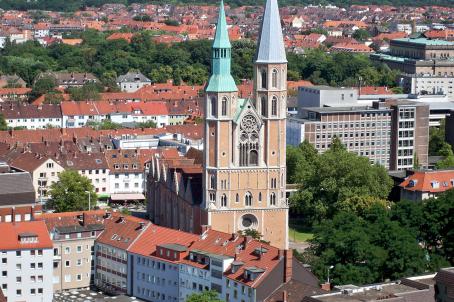Church of St. Magnus

The Church of St. Magnus in Braunschweig was consecrated in 1031, as attested by a document which happens to be the first documentary evidence of the existence of the present-day city of Brunswick. The parish church of St. Magni was rebuilt from 1252, the remains of the original church have been preserved in the foundations. Between 1873 and 1877, the building was restored by Ludwig Winter and painted in the style of historicism by Max Osterloh and Adolf Quensen. The stained glass windows were created in 1926 by Otto Linnemann. During the Second World War the church was severely damaged. From 1956 to 1964 the building was restored.





